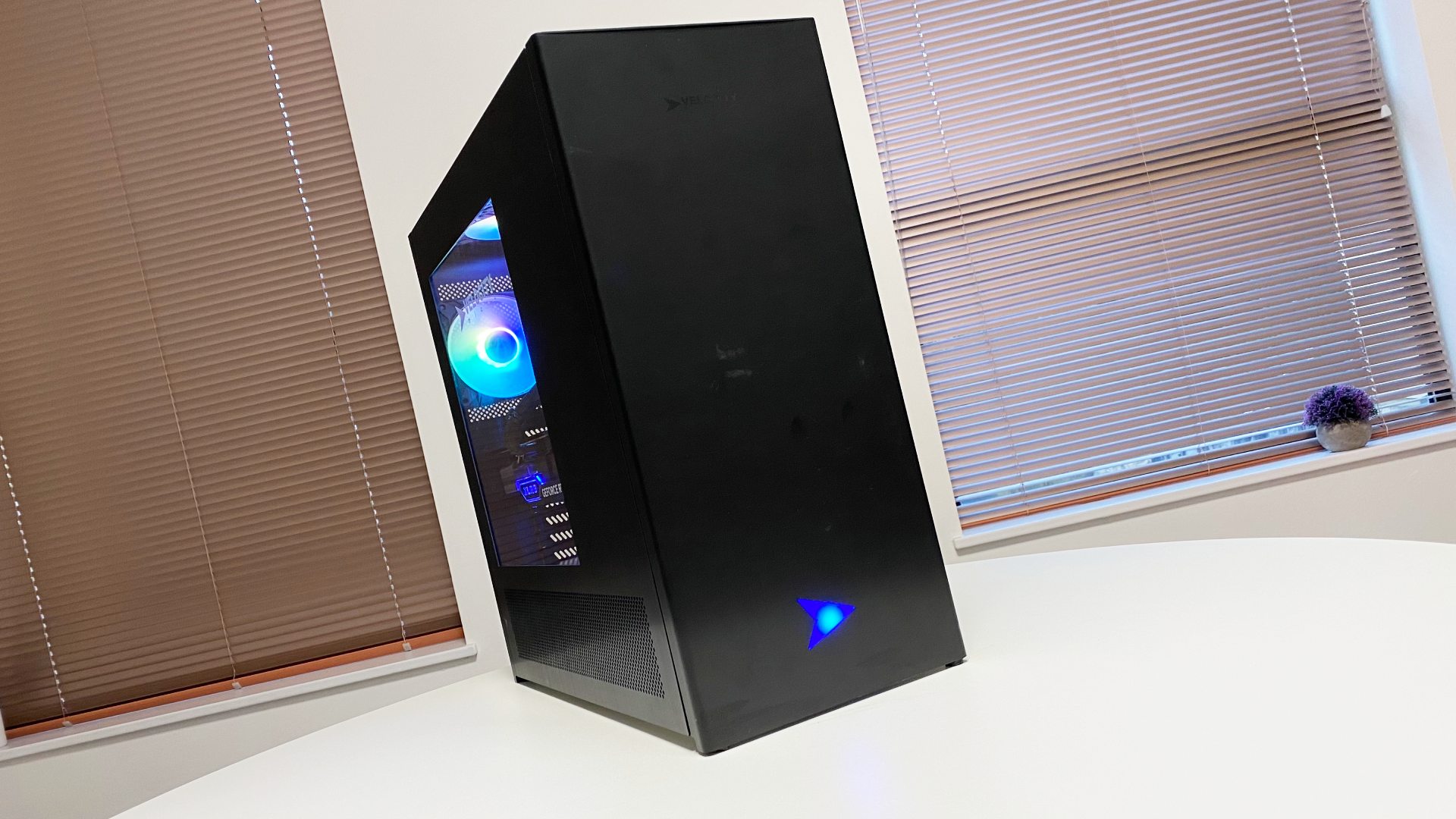Our Verdict
The Velocity Micro Raptor Z55 delivers monster gaming performance for a massive amount of money. It's hardly a value proposition. But if you're totally price insensitive and you favour engineering depth over snazzy styling, this could be your kind of machine.
For
- About as good as gaming performance gets
- Easy-access case
- Runs very cool and quiet
Against
- Megabucks price tag
- Anonymous aesthetic
- Chassis lacks pizazz
PC Gamer's got your back
What is the price of performance? In the case of the Velocity Micro Raptor Z55 gaming PC that price is the thick end of $6,000 depending on your exact configuration, which we'll rake through in detail in a sec.
It would take a very skilled DIYer to deliver something similar to the Raptor Z55's neatly executed cable management.
If that's a whole hill of money, well, there's no avoiding that these days. Most obviously, there's the current cost of graphics cards. At minimum, you're looking at $1,599 for an Nvidia GeForce RTX 4090 GPU, more for most add-in boards as opposed to Nvidia's stock Founders Edition board.
In the Velocity Micro Raptor Z55, that non-reference RTX 4090 is the pithily named PNY GeForce RTX 4090 24GB XLR8 Gaming Verto EPIC-X RGB. It's a monster. Throw in an Intel Core i9 13900K, that's another $500 plus change. Maybe you've heard motherboards ain't cheap, so add another $500+ for a premium Asus ROG board.
Then you're going to need a case, cooling, some DDR5 memory, SSD storage, and a quality power supply. Of course, in the case of a pre-built rig like this, you also need to pay somebody who knows what they're doing to piece it all together, neatly manage the cables, install the software and validate that the whole thing is good to go.
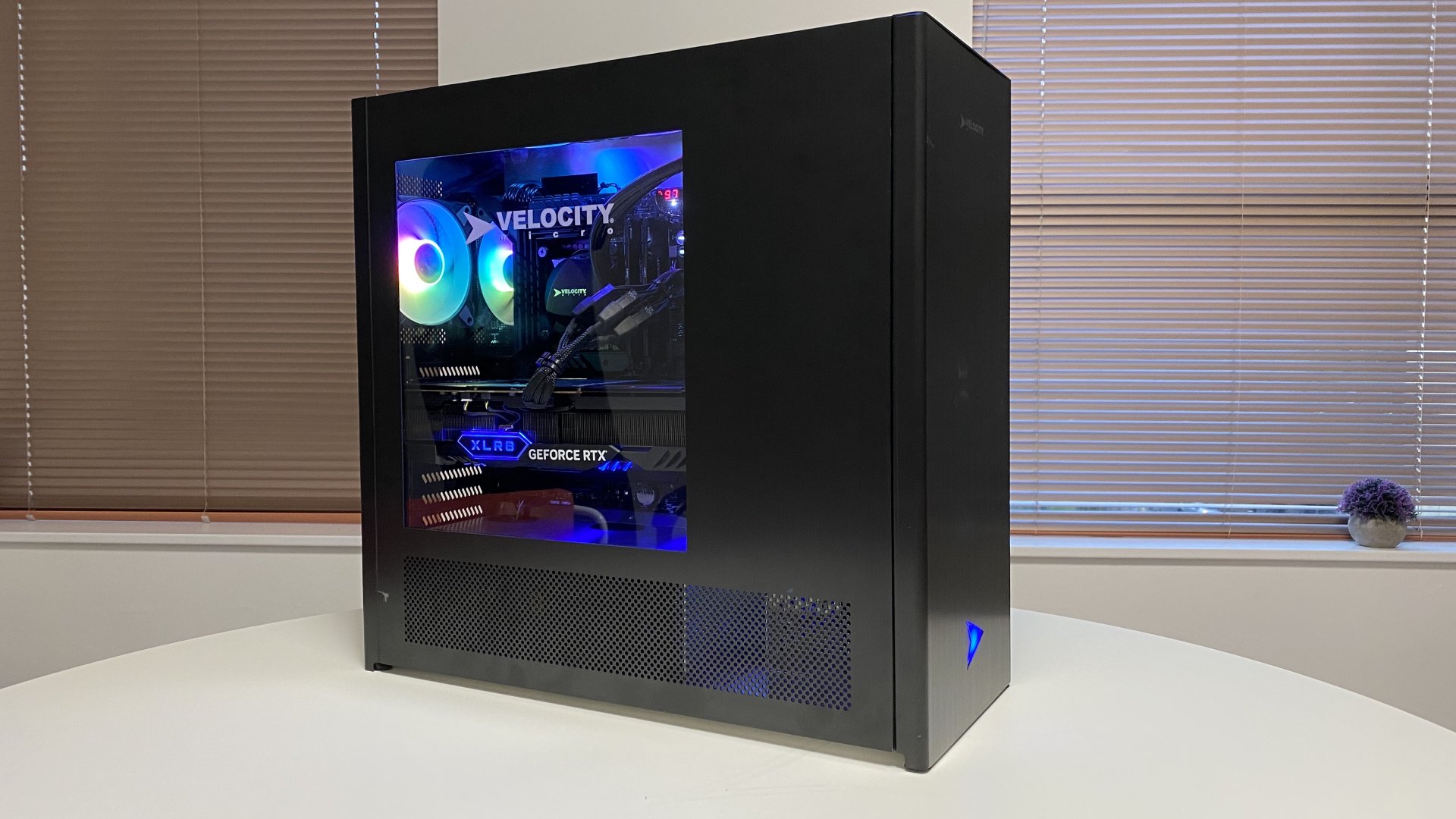
CPU: Intel Core i9 13900K
Cooling: Velocity Micro LiquiCool 8 AIO liquid cooler
Motherboard chipset: Z690
Memory: 32GB (2x 16GB) DDR5-6000
Graphics: PNY GeForce RTX 4090 24GB XLR8 Gaming VERTO EPIC-X RGB
Storage: Samsung 980 Pro 2TB PCIe 4.0 NVMe SSD
Power: EVGA 1000W 80 Plus Gold
Warranty: 1 year (3 years available)
Price: $5,700
In short, it all adds up pretty quickly. Does it add up to the circa $5,700 price of this PC as configured? That's debatable. But hold that thought. First, let's cover off the rest of the Velocity Micro Raptor Z55's main speeds and feeds.
Both the CPU and GPU are plugged into an Asus ROG Maximus Z690 Hero motherboard, which is a pretty trick item, even if at a street price of $549, it's not actually that close to the top of the Asus motherboard tree. The company will happily sell you a motherboard for $1,000 or more these days.
You also get 32GB of speedy Kingston Fury Beast Black XMP DDR5 RAM running at 6000MT/s and a 2TB Samsung 980 Pro SSD. The latter is a little off the pace these days compared to the very fastest PCIe Gen 4 SSDs, which is arguably a bit disappointing at this price point and given the relatively marginal cost of inserting something really cutting edge. But in experiential terms, it's a fairly academic distinction. You won't actually feel the difference compared to, say, an SK Hynix P41 Platinum.
For cooling, there's Velocity Micro's own LiquiCool 8 closed loop water cooler with a 360mm radiator and three 120mm fans. Power comes from a 1000W EVGA SuperNova 80Plus Gold with 90% efficiency and it's all wrapped up in, again, Velocity Micro's in-house GX6+ ATX case.
The GX6+ is a brushed aluminum affair with pretty bland styling and reasonable build quality. Let's put it this way, you don't delight in the engineering of the case, which is a pity at this price point. But you would find it hard to take issue with it on a functional level.
For sure, there's oodles of space inside. That space no doubt helps with the cable management, which is very neatly executed. But it would still take a very skilled DIYer to deliver something similar.
The case also sports a clip-in windowed side panel for easy access. More than simply not requiring any tools to access the innards, you don't even need to twiddle thumbscrews. The side panel just pops off. But it does that while also neatly and securely going back on afterwards.
If you're the kind of PC enthusiast that finds themselves leaving the side panel off because you just can't be bothered to turn a screw, this kind of clip-in solution is a real boon. You would have no more excuses, that's for sure.
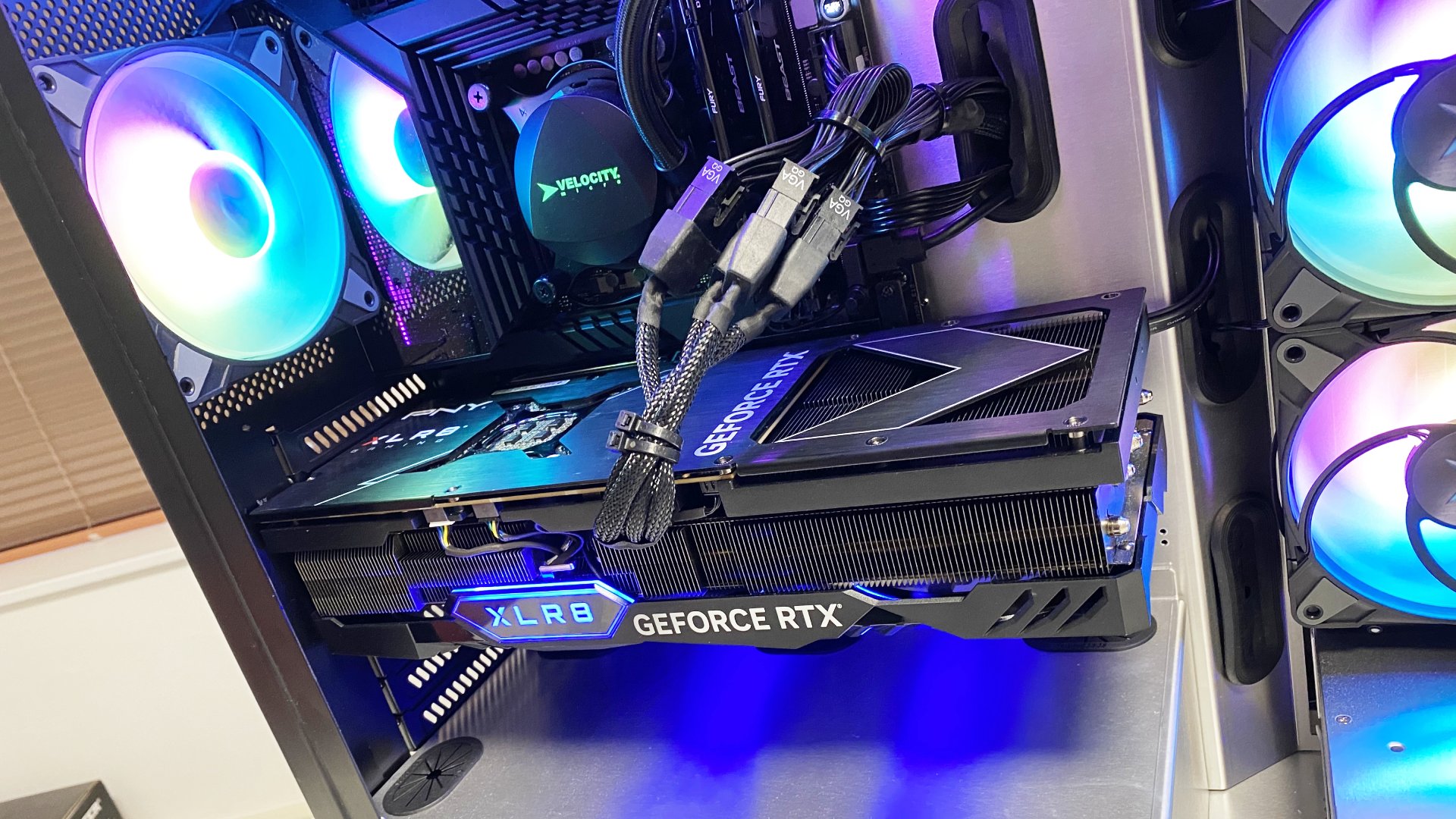
Anyway, as configured and built, the Velocity Micro Raptor Z55 runs very nicely indeed. In terms of noise, it's pretty much silent unless placed under very heavy loads. Throw something really heavy duty at the CPU and the fans for the water cooler do become audible. But only just. Noise simply isn't an issue.
Nor are temps. Even under maximum load, we only recorded 68 degrees Celsius for the Core i9 13900K CPU and 65°C for the RTX 4090 GPU, the latter indicating that heat sink inside the chassis is nicely managed.
As for performance, well, it's about as good as it gets for current desktop PC hardware, with one minor exception. The interesting comparison, perhaps, is with a rig from the immediately previous generation running an Intel Core i9 12900K and Nvidia GeForce RTX 3090, like the Alienware Aurora 13.
On the CPU side, it's multi-threading that really stands out. Those extra efficiency cores really make a difference, boosting performance in Cinebench R23 by as much as 50%. That's pretty epic for just a single generation.
Inevitably, the single-thread uplift isn't as impressive, but there's still a little extra performance there too, so it's not like the huge multi-threaded boost comes at a cost. The 13900K is faster everywhere.
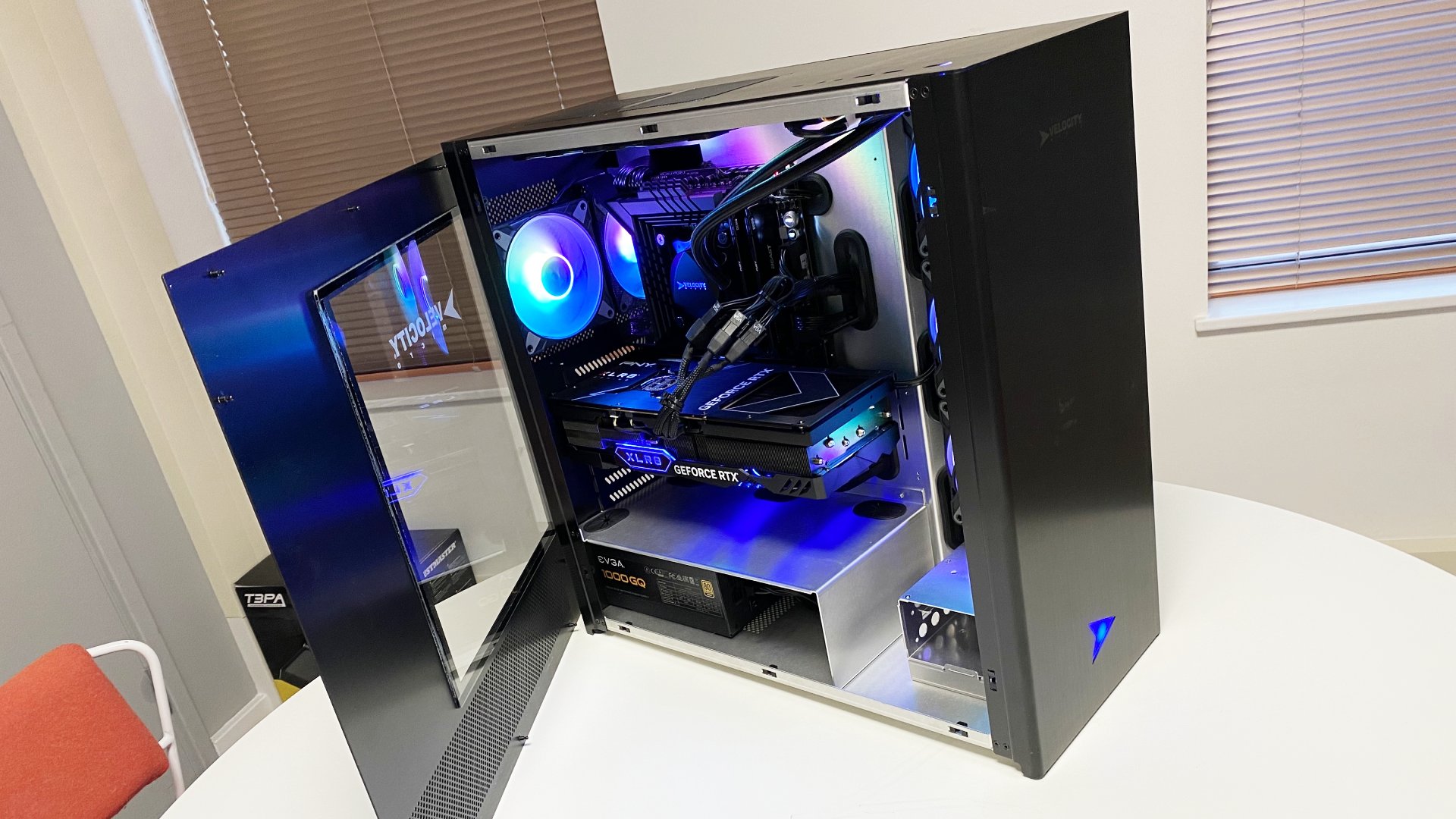
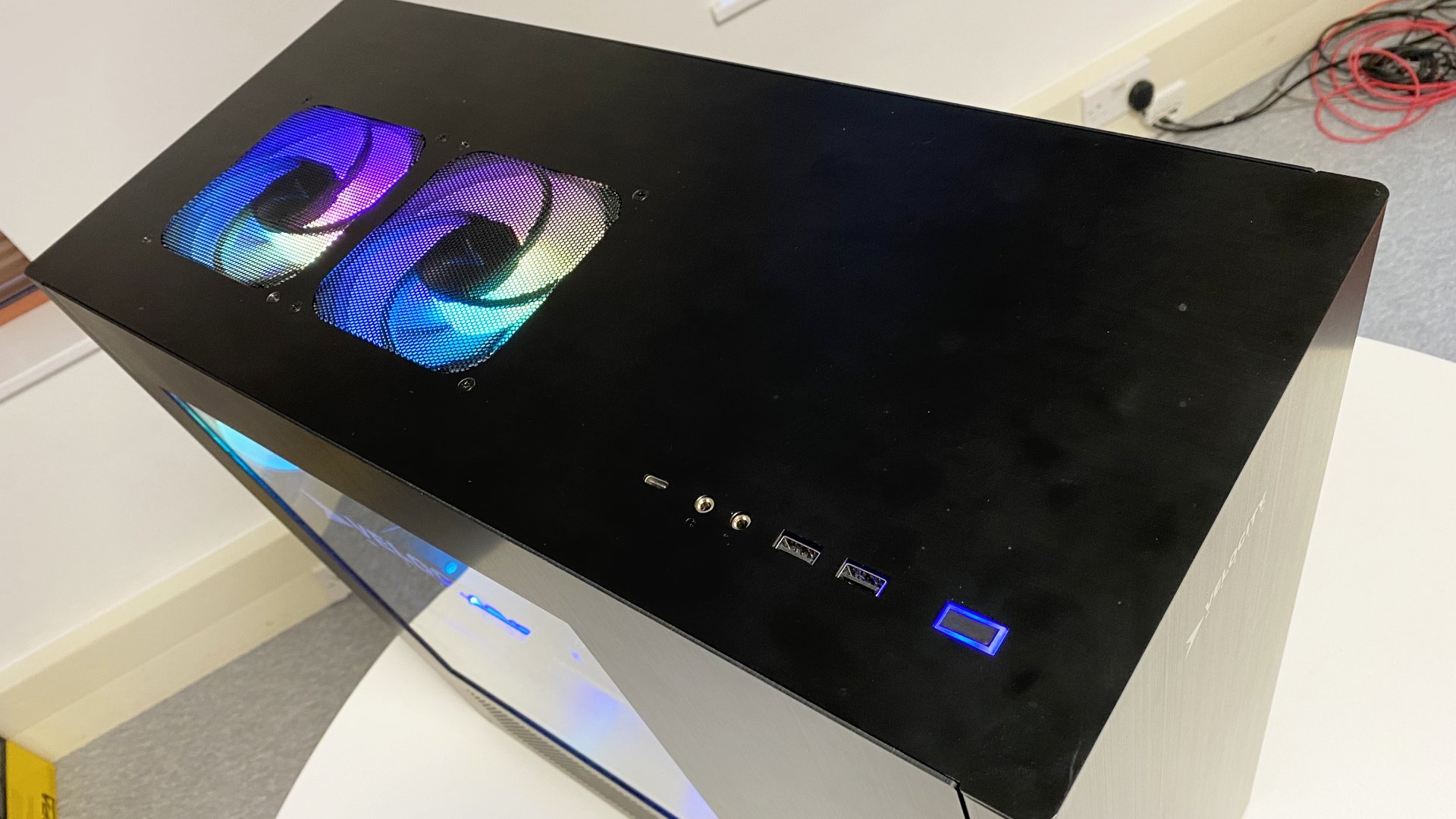
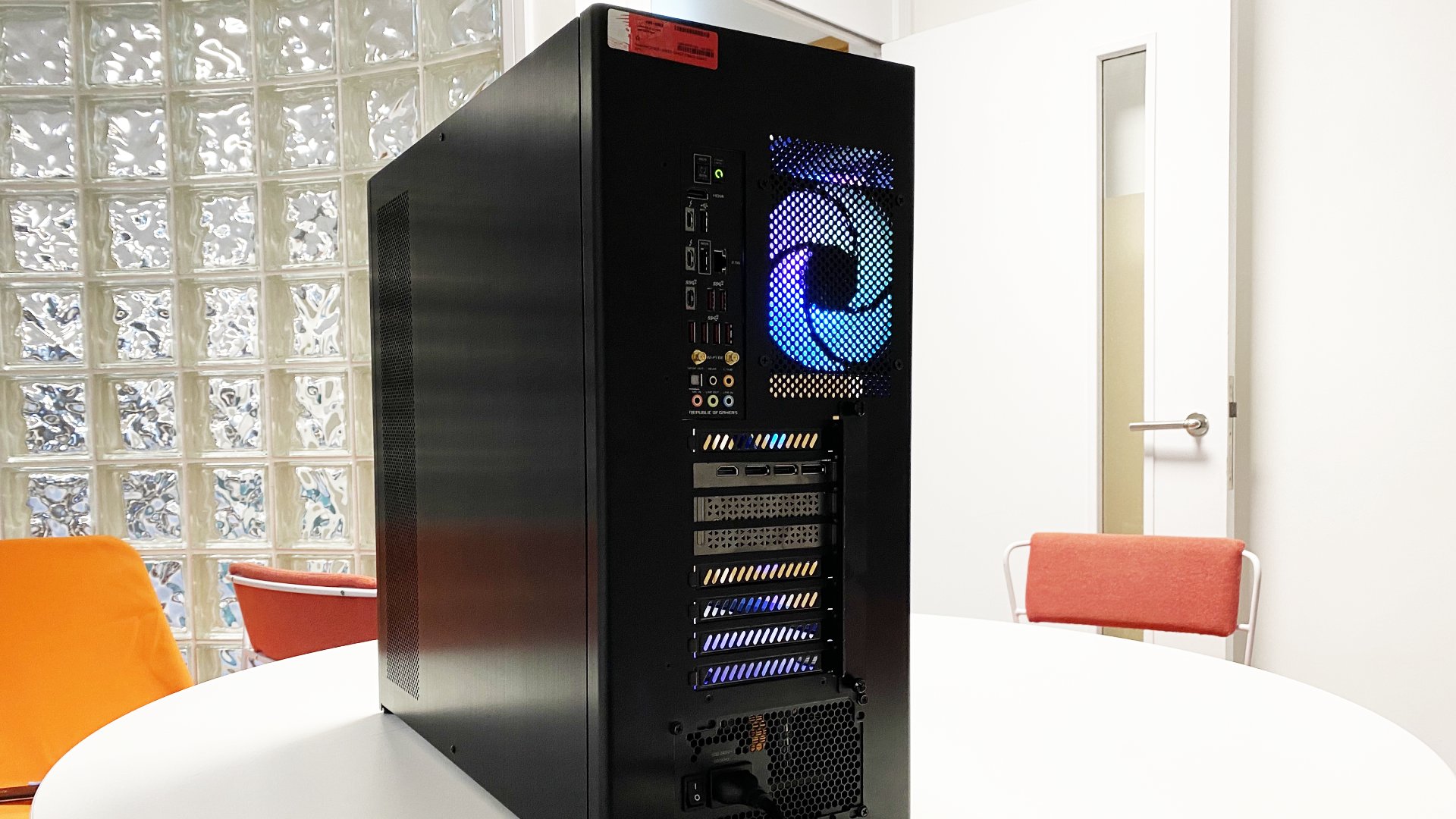
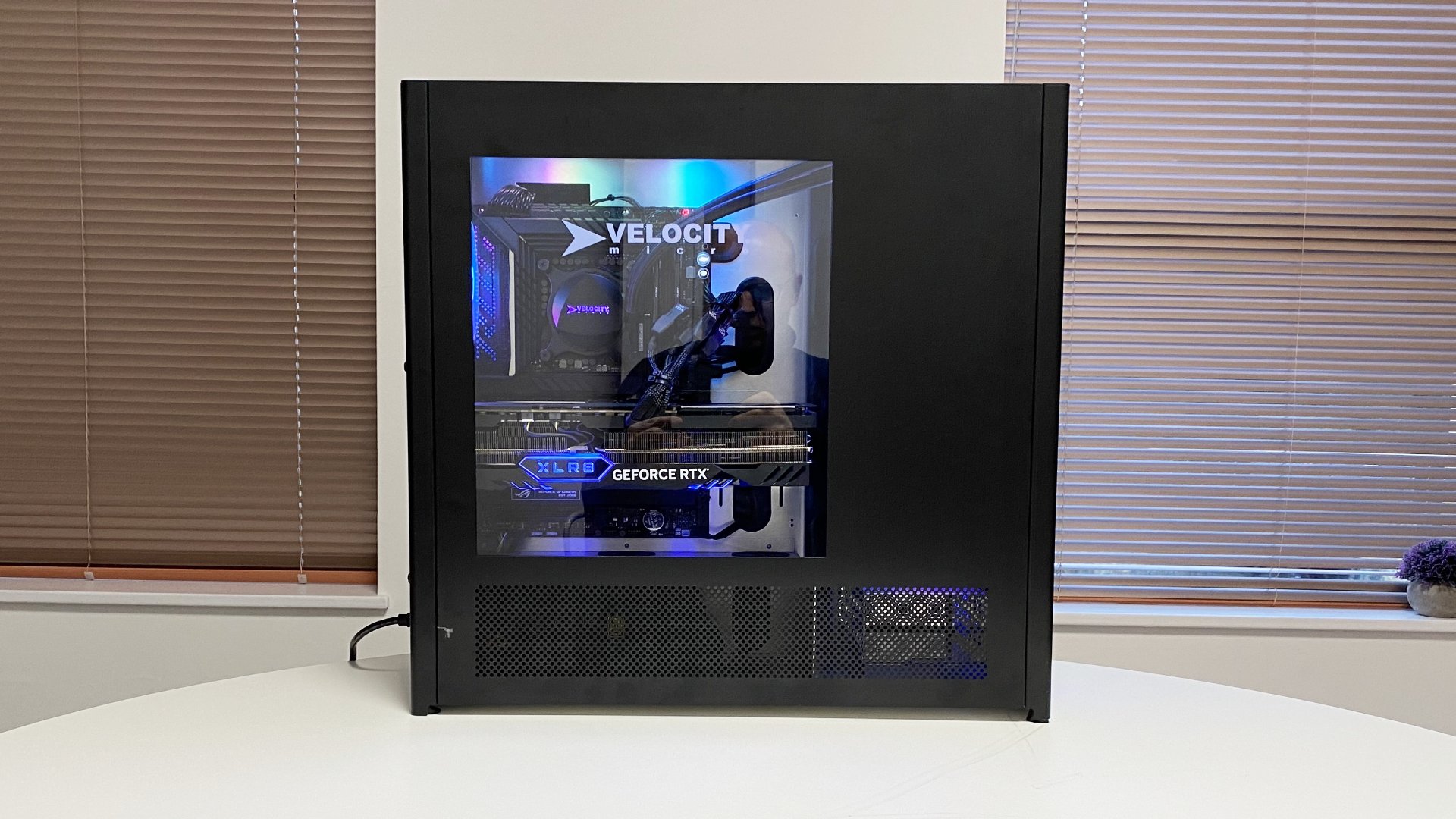
Gaming is what this machine is really all about and it absolutely doesn't disappoint.
But gaming is what this machine is really all about and it absolutely doesn't disappoint. The RTX 4090 is alone in the new Nvidia GeForce RTX 40-series in offering a major boost in performance while maintaining a similar, albeit extremely lofty price point. Actually, you could argue that the RTX 4090 is a bit cheaper now than the RTX 3090 was at launch given the intervening inflation.
If you further factor in the reality of massively inflated RTX 3090 prices for much of that GPU's existence as the top RTX 30-series option, the RTX 4090 looks even better. But however you see the value proposition, there's no doubting the raw performance of the RTX 4090. It's a beast.
In fact, in our 4K game benchmarks, it's sometimes as much as twice as fast. And that's for straight up native rendering and no DLSS scaling or Frame Generation complicating the comparison. That can make a huge difference.
System performance
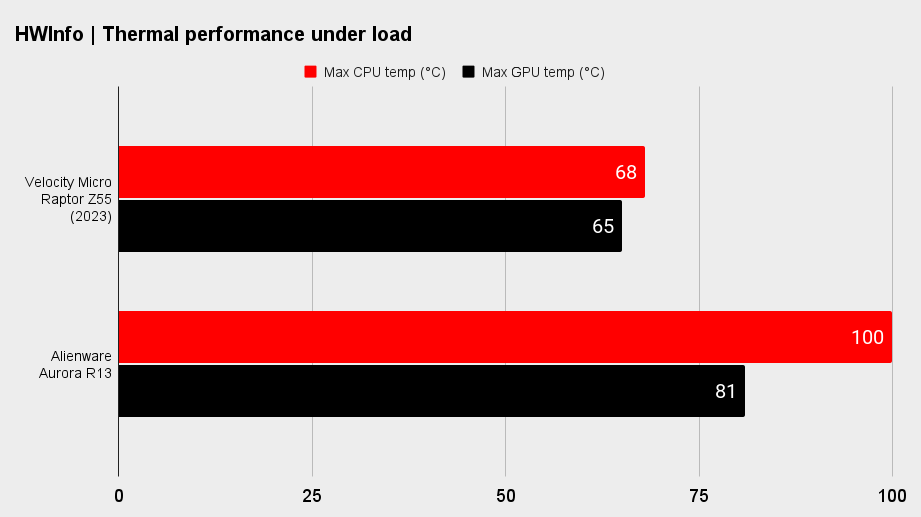

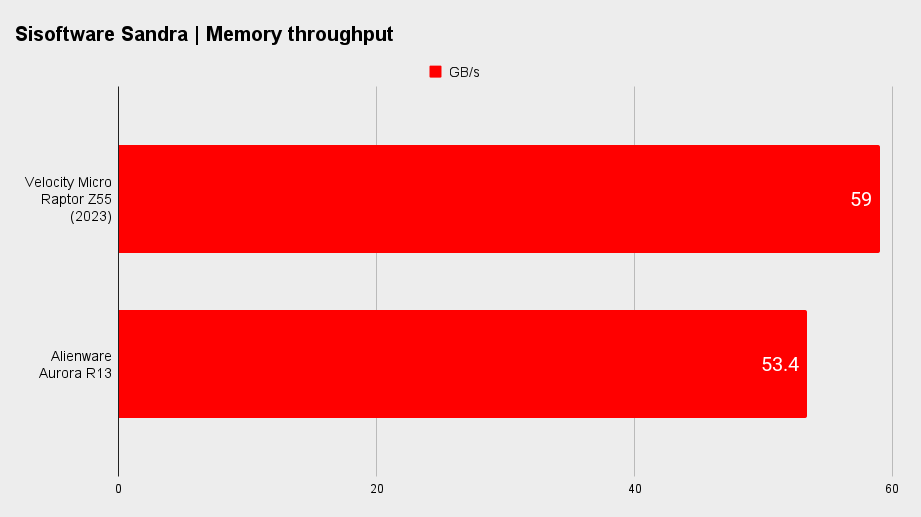
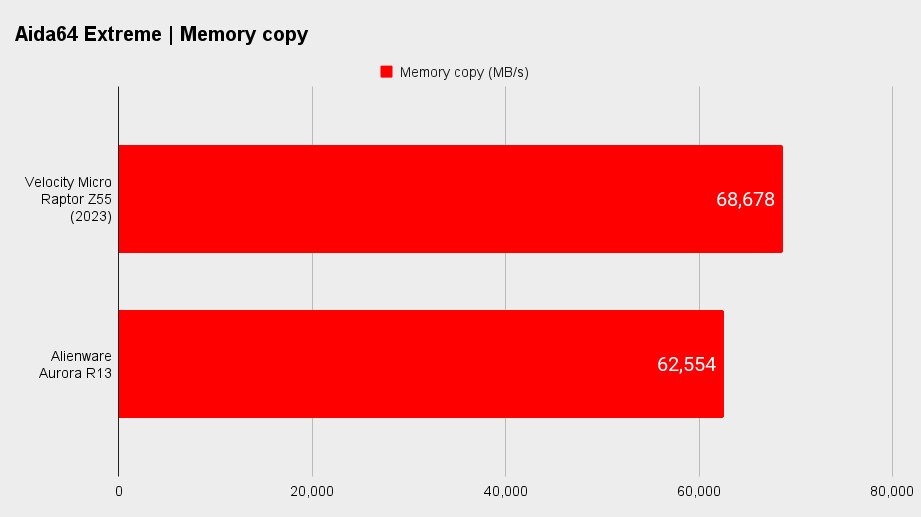
Take Cyberpunk 2077 running with ray tracing and all the goodies maxxed out. That brought the Alienware Aurora 13 running the 12900K and RTX 3090 to its knees, recording an average frame rate of just 22. The new machine is 90% faster, clocking in a playable if not exactly ideal 42 fps.
Of course, Cyberpunk with all the eye candy is something of a worse case scenario. At 4K with the details maximized, you're looking at average frame rates into triple digits with most games. So, yeah, the RTX 4090 is arguably the first GPU truly capable of high-refresh 4K gaming in most titles.
To put some numbers on that, you're looking at an average of 93 fps in Metro Exodus with RTX enabled and 126 fps without, over 200 fps in Hitman 3 and 156 fps in Horizon Zero Dawn. Again, those are all native rendering results with no DLSS or frame generation. Add in those features and the frame rates absolutely rocket.
4K gaming performance
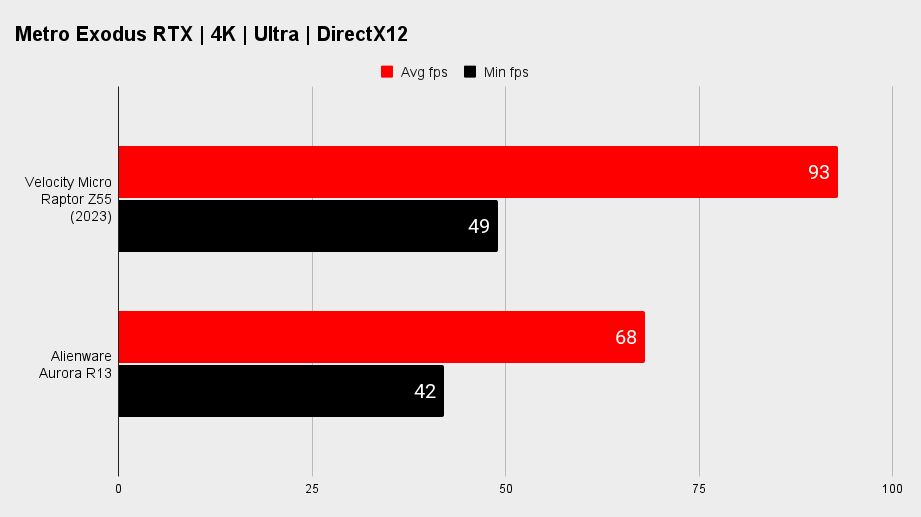

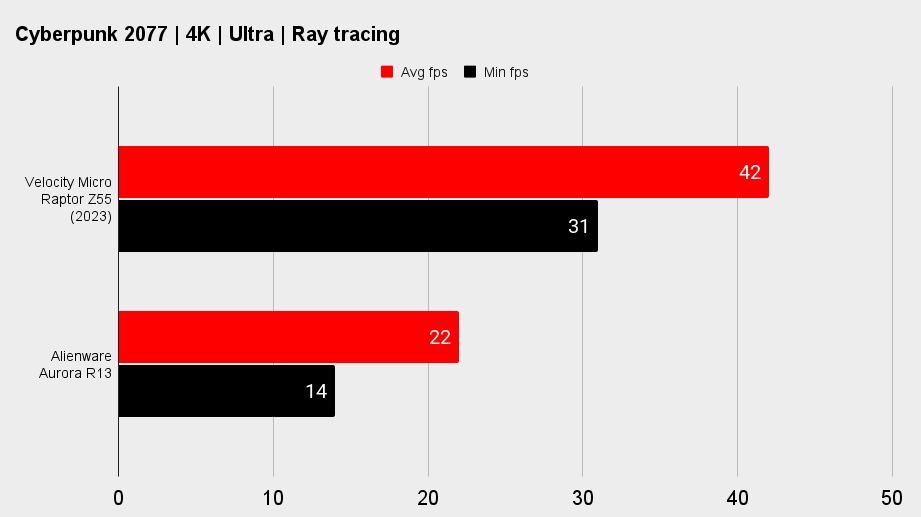
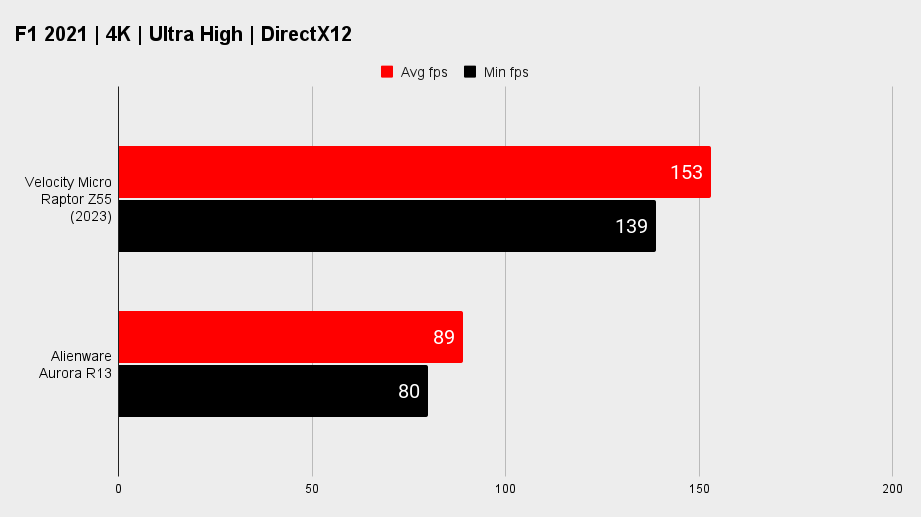
The one area of performance that slightly disappoints is storage. That Samsung 980 Pro SSD isn't exactly a slouch. But with 6,877MB/s reads and 4,936MB/s writes, there are certainly faster drives out there. That said, the drive's 4K performance remains largely on par with the best flash-based SSDs. Only Intel's now defunct Optane SSDs do 4K performance substantially better.
At which point we come back to the tricky question of value. Could you build your own rig with an Intel Core i9 13900K chip and RTX 4090 GPU that would deliver exactly the same gaming experience for far less money? Yes. Indeed, the gap between the cost of this Velocity Micro system and the home built alternative is bigger than you might expect.
Of late, the received wisdom has been that you don't save all that much by building your own PC. But that's clearly not the situation here.
Of late, the received wisdom has been that you don't save all that much by building your own PC. But that's clearly not the situation here. We reckon you could easily shave off around $2,000, maybe even more, going the DIY route.
But here's the thing. You'd still be spending big bucks and finding yourself in a position of having made that very substantial investment in return for very little cover and support. All you'd have is individual component warranties and support for the PC as a whole.
You'd have to do your own fault-finding, book any RMAs yourself, and risk being left with no functioning PC while you work through the process. Some experienced DIYers will be entirely comfortable with that. They'll have spare components they can swap in to help isolate faults and maintain some level of operation.
Equally, it's also not hard to see why paying more for a pre-built rig will make sense to anyone who doesn't routinely throw PCs together in their spare time. Which is exactly where the Velocity Micro Raptor Z55 comes in. Is that peace of mind and ease of support worth a couple of thousand bucks? We can understand how it could be to some. Y'know, those money-no-object folk system builders just love.
As for the more specific proposition offered by Velocity Micro here, well, the chassis lacks a certain pizazz. But it's extremely well built and, functionally speaking, the temps, noise levels and performance are truly excellent.
It's a high-quality, no-nonsense gaming rig built to deliver fantastic frame rates rather than a show off machine for turning heads. As it happens, we like that quite a lot. But that price tag? It's still a doozy.
The Velocity Micro Raptor Z55 delivers monster gaming performance for a massive amount of money. It's hardly a value proposition. But if you're totally price insensitive and you favour engineering depth over snazzy styling, this could be your kind of machine.

Jeremy has been writing about technology and PCs since the 90nm Netburst era (Google it!) and enjoys nothing more than a serious dissertation on the finer points of monitor input lag and overshoot followed by a forensic examination of advanced lithography. Or maybe he just likes machines that go “ping!” He also has a thing for tennis and cars.
